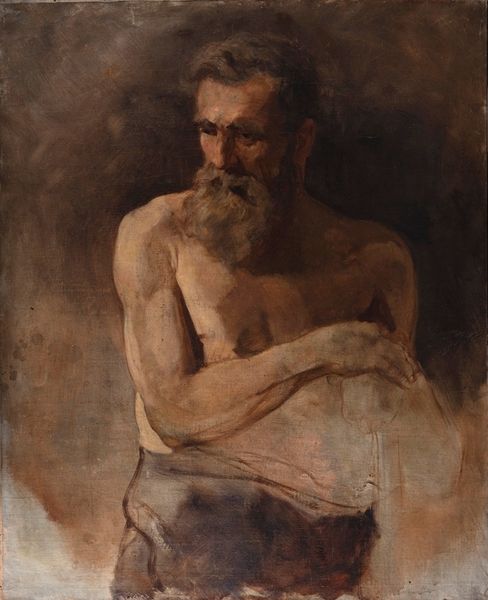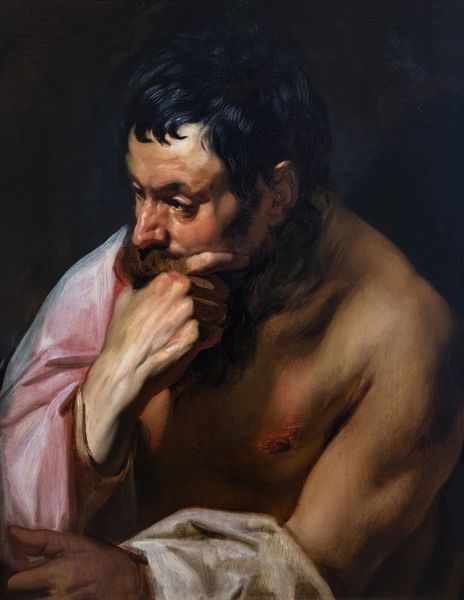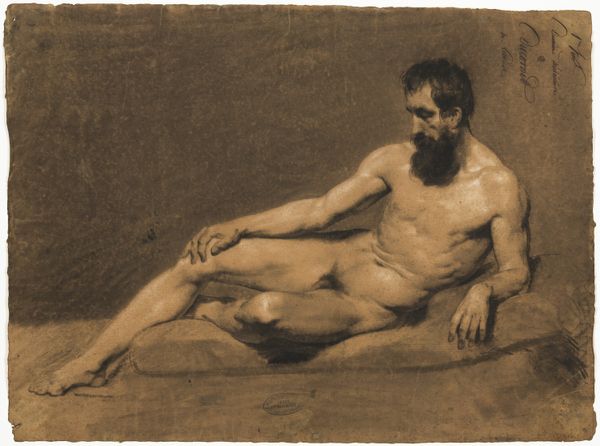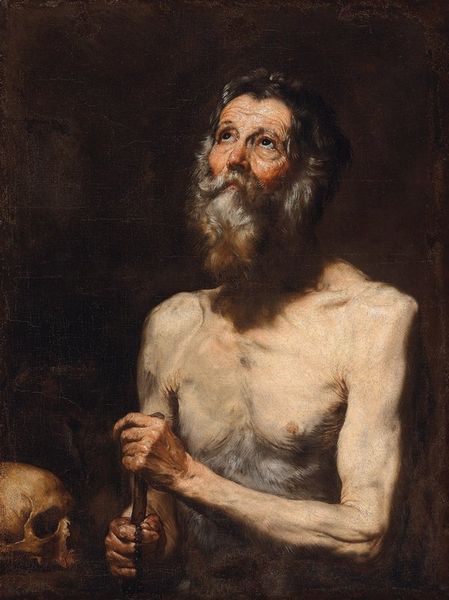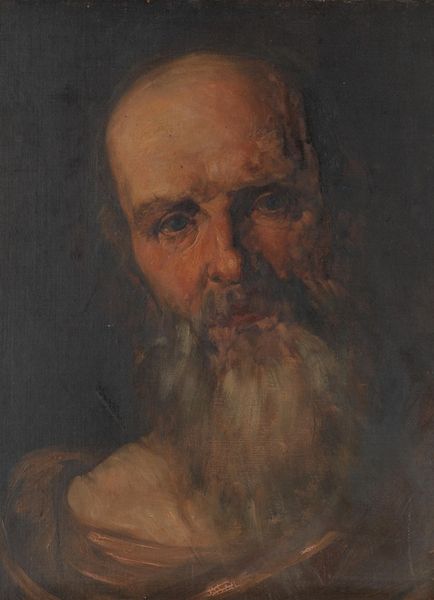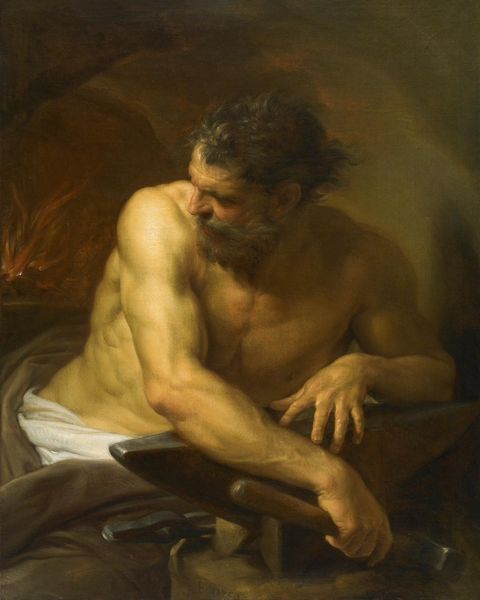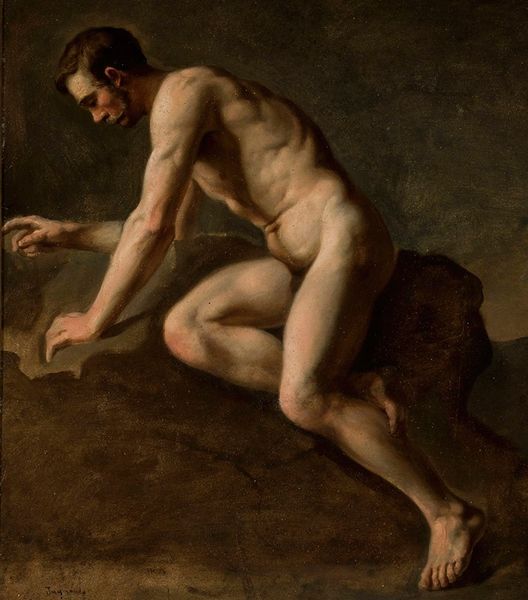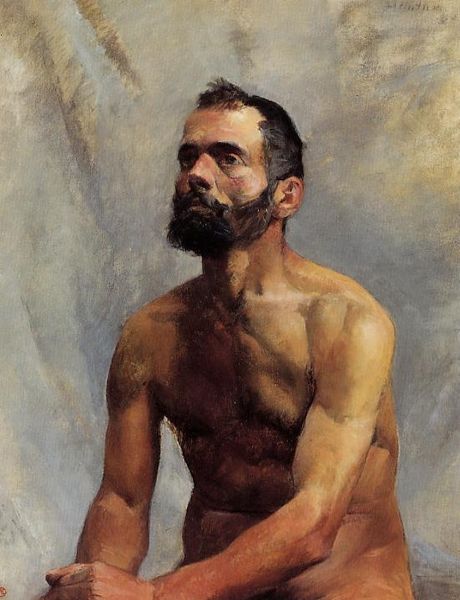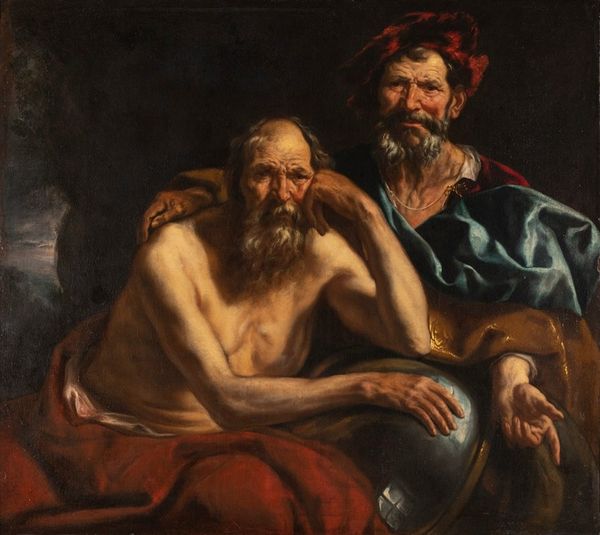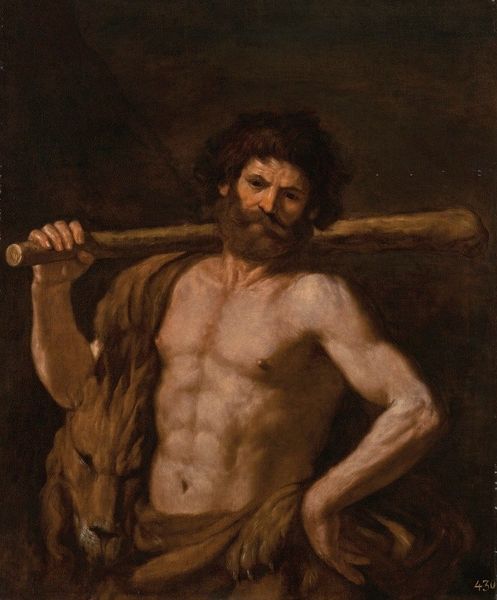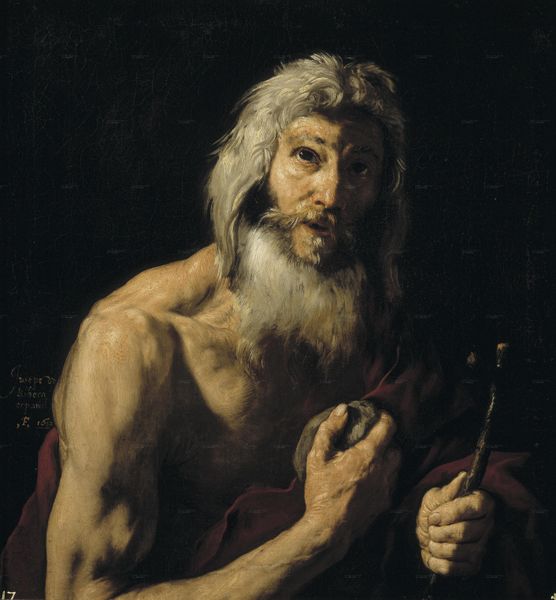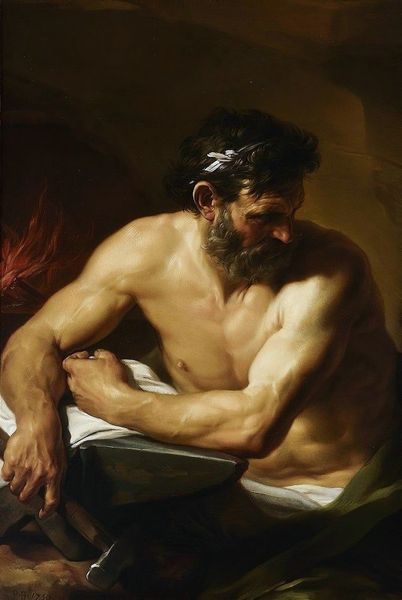
oil-paint
#
portrait
#
figurative
#
baroque
#
portrait
#
oil-paint
#
figuration
#
nude
Copyright: Public Domain: Artvee
Curator: Here we see "Mannentorso," an oil painting attributed to Peter Paul Rubens from around the 17th century. It’s a powerful, fragmented depiction of a male nude. Editor: My first impression is its quiet strength. The subject's gaze is averted, almost melancholic, despite his obvious muscularity. There's a vulnerability presented through that sidelong glance. Curator: Precisely. Rubens was a master of capturing human form and emotion through masterful brushwork and dramatic use of light. Note the strategic employment of impasto and chiaroscuro, which gives volume and depth to the man’s figure. Editor: But let's not isolate this image, the historical context informs this work deeply. We see a reclamation of classical ideals. How might this presentation reinforce dominant narratives about masculinity during the Baroque era? And who would be privy to such imagery, reinforcing ideas about class and education? Curator: The subject's physique aligns with the era's fascination with classical sculpture and heroic forms, absolutely. However, rather than simple glorification, Rubens presents the torso unfinished, emphasizing its artistic origins and process of creation. Note also the dynamism created by the diagonal arrangement, anchored by that stark drapery. Editor: While appreciating its formal elements, let’s not ignore the inherent power dynamics in the act of portrayal. What did it mean to depict and circulate images of a male body in this period, and how did those representations intersect with social and gender norms? Curator: Undoubtedly, there’s a dialogue happening here with established visual vocabularies and socio-cultural context, especially when depicting nudity. Rubens acknowledges, even manipulates, tradition even as he departs from it. The incomplete state is rather striking. Editor: A provocative image, given the cultural weight it bears. I appreciate this image more knowing the period that birthed it. Curator: I, too, feel invigorated having contemplated the image once again. Thanks to that context, my reading becomes refreshed with an interdisciplinary perspective.
Comments
No comments
Be the first to comment and join the conversation on the ultimate creative platform.
